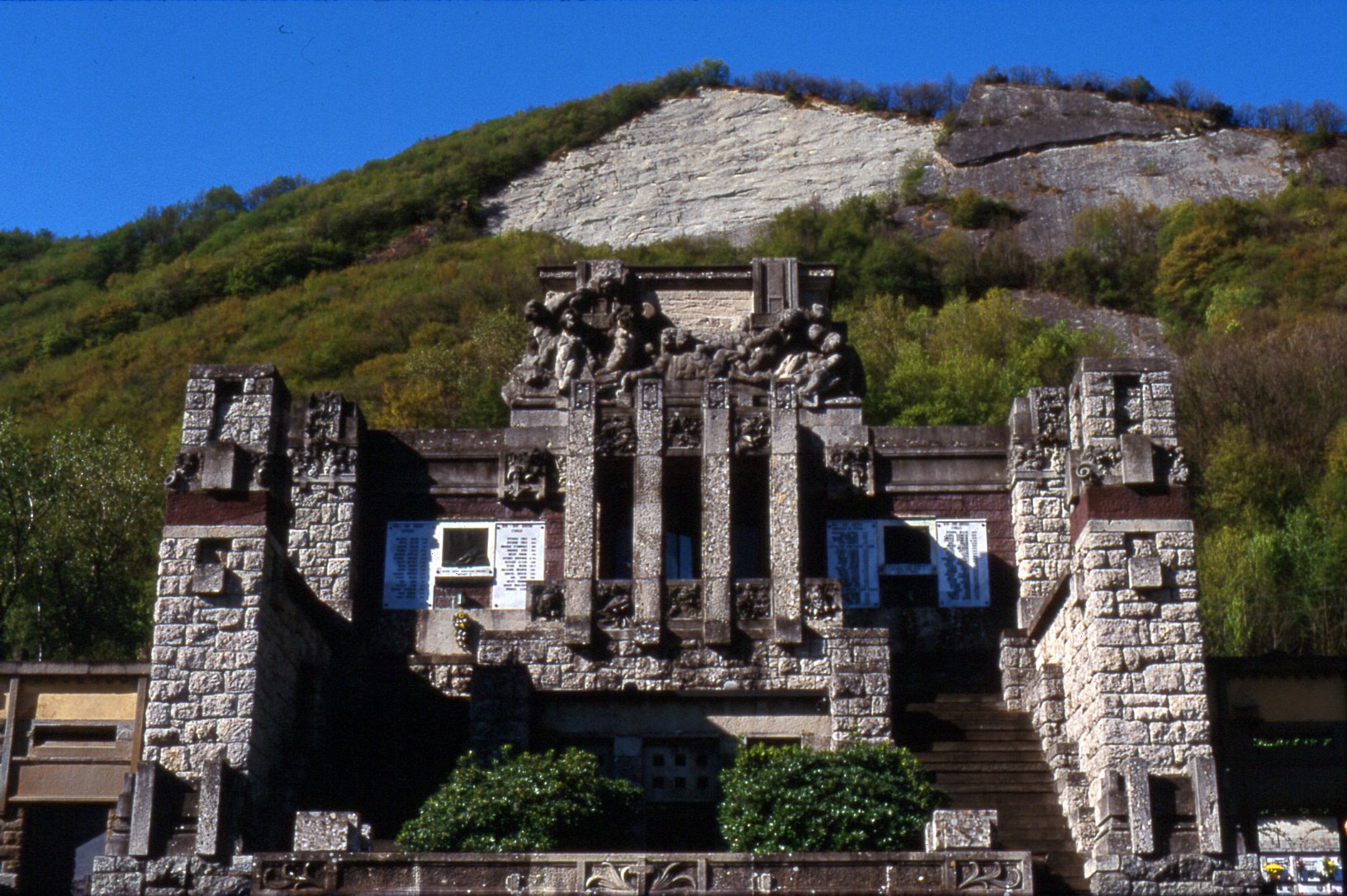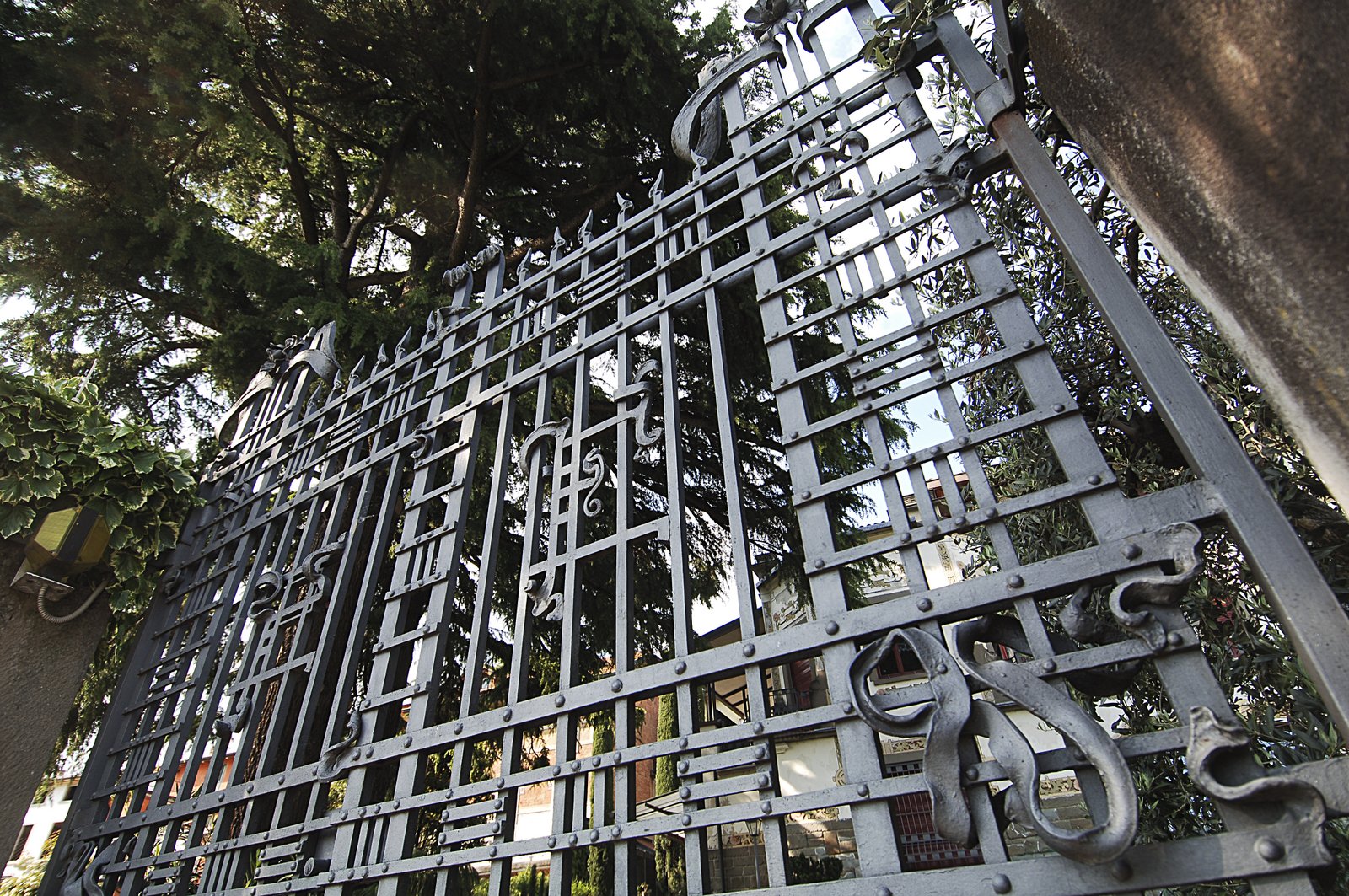








The Liberty villas of Sarnico
Differently from what it is possible to observe in other Lombard lakes, the Lake Iseo is not characterised by a relevant presence of stately homes. However, an original centre of Liberty villas can be viewed in Sarnico, designed by Milanese architect Giuseppe Sommaruga that left some of the finest products of his art in the small centre by the lake, inspiring the public and private decoration of a good portion of local architecture.
Giuseppe Sommaruga moved to Sarnico thanks to the foresight and substantial economic wealth of the Faccanoni family. In 1897, Engineer Pietro Faccanoni (with his brothers Giuseppe and Luigi) was director of an Italian firm which was dealing with the construction of aqueducts and other public works in Vienna. Sommaruga was called to Sarnico for the first time in 1907 in order to transform an old spinning mill into a Liberty villa. Upon the death of its owner, the villa located at via Orgnieri 1 (Orgneri street) was purchased by another private citizen that preserved it in all its original splendour.
The floor plan of the villa of Pietro Faccanoni and its façade recall the Florentine villas of the 15th Century. The floral decorations on bands that cross the building and follow the curvature of the arches are instead typical of the Liberty style. The external fence in wrought iron follows the fluent and fluttering motifs of the “art nouveau” with utmost coherence, result of the collaboration with blacksmith Alessandro Mazzucotelli, a real genius of wrought iron that assisted the architect during almost his entire professional career. Similarly, the interior of the villa is decorated and furnished with a fine boiserie (panelling) and wall furniture, result of the creativity of furniture-maker Eugenio Quarti. The ceilings are decorated with floral patterns, using the cement-carving technique.
Always in 1907, Sommaruga began the design of the villa of Giuseppe Faccanoni. This is probably the real masterpiece of the Milanese artist from Sarnico and at the same time, it represents one of the finest works of his entire career. Located at via Vittorio Veneto 56 (Vittorio Veneto street) , the Villa is surrounded by a suggestive and vast garden. Arranged on two floors, embellished with attics, terraces, bow windows (similar to Renaissance choir stalls) and tower, the building features a main entrance on the smoothed corner facing the lake. Various types of stone finish the structure and liven up the irregular trend of the villa, also decorated with bands in terracotta and majolica. A series of sculpted animals, more or less clear (a sort of bestiary of Medieval style) populates this “bachelor’s small villa”. The symbolic reference to the structure of a ship fulfils a specific scope and underlies a close complicity between architect and client. The temptation of an esoteric reading is easy and immediate. The visitor is immersed in an almost magical atmosphere and the sense of loss pervades the disoriented guest constantly looking for a “real” entrance. The entrance gate in wrought iron is spectacular: in addition to the usual bands, the taste for natural depictions is found again with the representation of a collection of flower samples and incautious insects captured by weird spider webs.
In conclusion, the imposing building of Villa Luigi Faccanoni (now Surre) is located at Via Predore 5 (Predore street). The patterns of previous villas are extraordinarily enlarged in this construction. The stage set is triumphal and the high “Medici” family tower rises in a position of domain nearby the lake. The decorations are also characterised by the “non-colour” of gold and the vast spaces force to raise the eyes.
Mausoleo Faccanoni (Faccanoni Mausoleum) dated 1907 located at Sarnico cemetery deserves a comment on its own: funeral constructions were a forced step also in Sommaruga’s career. In the small Sarnico cemetery, the Milanese architect built a secular tomb, a sort of eastern ziggurat without Christian features. The structure is decorated with sculptures and friezes by the Milanese sculptor Ambrogio Pirovano.
Massimo Rossi













